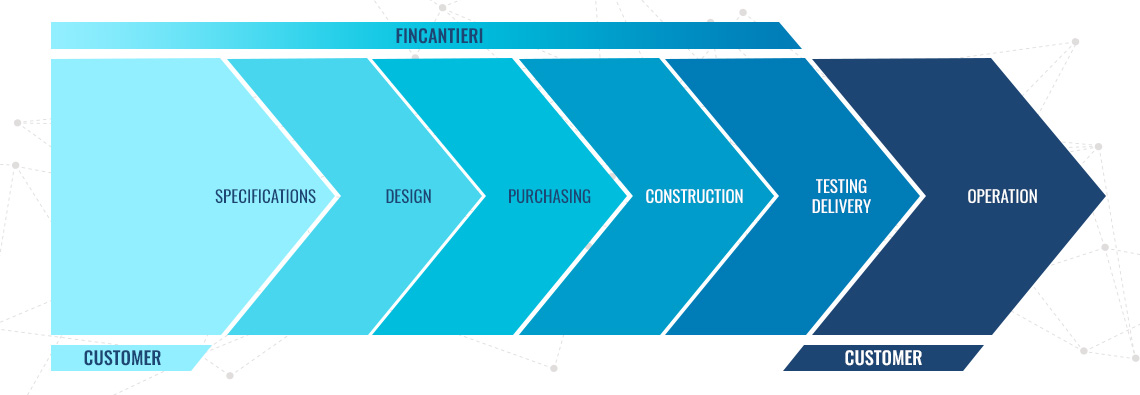In line with the Environmental Policy and the objectives of the Sustainability Plan, we have defined an eco-design system to promote the development of environmentally sustainable ships. Objectives can be identified for each project to ensure that the assumptions, principles and control metrics (KPIs) identified for the realization of an eco-sustainable product are translated into choices regarding design and the acquisition of systems/machinery that make up the ship product by following the eco-design procedure.
In 2023, we have continued along this sustainable path by updating the initiatives already made available in line with the latest technological developments and eliminating those which, having become widespread and in common use for some time, are no longer innovative. As part of the same policy, and with reference to the different environmental aspects, we have defined criteria to enhance internally the technological solutions adopted for each ship built. This approach makes it possible to compare the different constructions and to monitor the product’s environmental sustainability trends over time. The foundation of the entire process.
The eco-design criteria apply in the following areas:
- product development/construction;
- management of the product over its operational life;
- management of the product’s disposal at the end of its life.


During the design stage, the criteria adopted aims to identify:
- solutions that reduce the environmental impact of the material introduced into the production unit for construction;
- solutions that reduce marine and air pollution;
- solutions to manage and treat the waste generated onboard, dehydratation, stabilization and compacting for storage onboard or land ashore. Replacement of incinerator with new technologies with low environmental impact;
- solutions that give rise to a reduction in energy consumption.
Depending on the product’s management over its operational life, the design decisions consider the aspects related to energy consumption and interaction with the surrounding environment, also take similar products and those considered “best in class” in the market as a reference.
The design decisions also take into account the containment of any environmental impact during the product’s decommissioning. Therefore, action is taken in the choice of materials, components, systems with characteristics that limit the environmental impact of the dismantling and disposal operations at the end of the product's life.
Our cruise ships have voluntary certifications such as Green Passport, Clean Ship or Eco (the name of the certification is different depending on the classification society). All naval vessels are delivered with the Green Passport and some of them also have the Clean certification.
The Green Passport includes our commitment to provide, on delivery of the ship, the inventory of materials to be monitored during the ship’s life cycle and it is used to ensure it is scrapped safely and in an environmentally friendly way, in accordance with the Hong Kong Convention for the safe and environmentally sound recycling of ships, adopted by IMO’s MEPC 197 (62). The classification society will carry out periodic audits throughout the life of the ship to ensure compliance with environmental standards and maintenance of its environmental certification.
Which objectives do we have on this topic?
Environmental Impact of products and services: 2023-2027 Sustainability Plan objectives and targets
Development of ecologically sustainable products and services with the aim of contributing to a circular and low carbon economy
Discover the objectives
Identify initiatives and projects for the development of products and design tools for ships with reduced environmental impact
| Description/Target | Timeline | Perimeter | Status | SDGs |
|
9 low environmental impact project initiatives (4 of which for the cruise business and 5 for the naval segment) |
2025 |
Fincantieri S.p.A. |
|
|
|
5 low environmental impact project initiatives (4 of which for the cruise business and 1 for the naval segment) |
2027 |
Study on circular economy for Fincantieri S.p.A. cruise ships in cooperation with a university/research centre
| Description/Target | Timeline | Perimeter | Status | SDGs |
|
• Analysing the maturity level of players in the shipping industry |
2025 |
Fincantieri S.p.A. |
|
|



